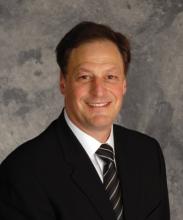LAS VEGAS - Competition among large retailers is bringing down the cost of terbinafine, but griseofulvin is still better for many fungal infections, according to Dr. Lawrence F. Eichenfield.
The ideal prescription depends on the type of fungus and the site of the infection, said Dr. Eichenfield, chief of pediatric and adolescent dermatology at the University of California, San Diego, at the pediatric update sponsored by the American Academy of Pediatrics California Chapter 9.
Topical medications alone can seldom cure tinea capitis because the fungus finds protection inside hair follicles, but he advised using them in combination with systemic drugs.
The signs of tinea capitis include scaling, pustules, kerion, black dots, alopecia, adenopathy, and autoeczematization (also known as id reaction). The condition can resemble seborrheic dermatitis, psoriasis, folliculitis, and other diseases.
"So it's worth doing a routine culture," said Dr. Eichenfield, adding that it’s fairly easy to obtain a specimen with a toothbrush, cotton swabs, or bacterial culturettes.
The most common culprit is Trichophyton tonsurans, which is spread by human contact. The second most common cause is Microsporum canis, which is spread by cats.
Family coinfection can contribute to treatment failure, so inquire about tinea capitis and tinea corporis in other affected family members and pets, said Dr. Eichenfield. The standard therapy for tinea capitis is microsized griseofulvin (20 mg/kg) for 6-8 weeks, he advised.
The only other approved drug is terbinafine granules, and these are hard to obtain, he said, but itraconazole and fluconazole might also work.
Particularly if griseofulvin fails, Dr. Eichenfield recommended terbinafine 4-8 mg/kg per day for 4 weeks. But one recent study found that griseofulvin was much better than terbinafine for M. canis (J. Am. Acad. Dermatol. 2008;59:41-54).
The same organisms, along with T. rubrum and T. mentagrophytes, can cause tinea corporis. Patients present with red scaling plaque, often with an active border. Central clearing may give the lesions a ring shape.
They can be treated with a wide variety of topical drugs, among them clotrimazole, econazole, oxiconazole, ciclopirox, terbinafine, and ketoconazole. Systemic treatment should be reserved for extensive disease or special circumstances, such as for wrestlers. The best systemic treatment is griseofulvin, 15-20 mg/kg (5-10 mg/kg ultramicrosize), said Dr. Eichenfield.
Although fewer than 1% of children suffer from onychomycosis, the proportion increases with age; more than a third of adults older than 70 years have the disease. In children who are not severely affected, the disease can go untreated.
There is no approved treatment for onychomycosis in children, but Dr. Eichenfield said that he is comfortable recommending terbinafine as long as parents are informed that this is an off-label use of the drug. "Terbinafine is so cost effective," he said. "You can get it for $4-$7 per month. It used to be $1,200 for a full course."
His recommended dosages to treat onychomycosis are the following:
• For children weighing less than 20 kg: 62.5 mg/day.
• For children weighing 20-40 kg: 125 mg/day.
• For children weighing more than 40 kg: 250 mg/day.
"It's recommended that you get baseline lab work," he said. "Many of us will repeat [it] 1 month into the therapy."
In a study presented at the American Academy of Dermatology annual meeting in 2007, 39% of children treated with ciclopirox lacquer achieved a complete cure, compared with 22% of children who were treated with a placebo, suggesting that the disease can spontaneously resolve.
And what about lasers? "Whether lasers are any better than any other debridement has not been addressed," he said.
Dr. Eichenfield reported having no relevant financial disclosures.


